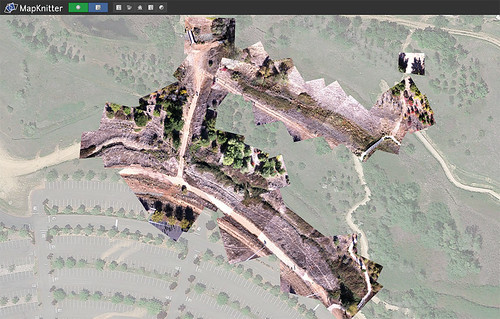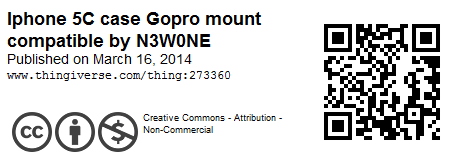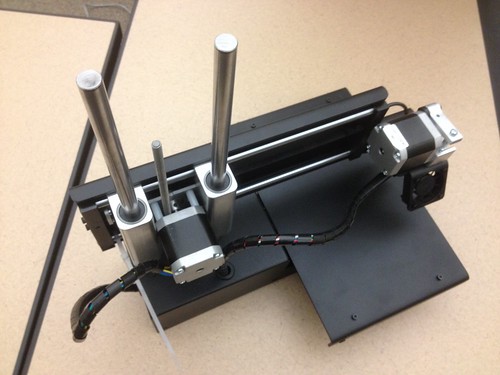Students, faculty and staff gathered for a presentation about 3D printing. You can check out the slides here. Lots of enthusiasm in the room, and lots of support for a makerspace.
1. D2L Data
For Spring 2015:
- 432 course sections, or 61% of all course sections are linked to D2L course accounts
- 6,534 (unduplicated) students, or 84% of all students are enrolled in courses linked to a D2L course account
- 157 faculty from 65 disciplines are using D2L course accounts
- Approximately 57% of faculty (full and part-time) are using D2L to support online, hybrid, and face-to-face courses
2. Dean of DE
3. Adaptive Media Design Specialist
The Accessibility and Universal Design Specialist supports faculty in the development of effective online learning environments for online, hybrid, web-enhanced course sections, and in-person courses to ensure that all content and media meet approved web accessibility standards and the principles of Universal Design. The position serves as the main point of contact for support of the college’s *Web Accessibility plan. The position will also develop and deliver training incorporating Universal Design principles for college faculty and staff.
DUTIES
- Consults with instructional divisions and other departments on standards and best practices for compliance with the Web Content Accessibility Guidelines 2.0 (WCAG) AA standards for instructional materials and principles of Universal Design.
- Works with individual faculty members and departments to design accessible online courses and course components, including assessments
- Develops materials and resources that promote the principles of Universal Design and web accessibility
- Provides technology based training sessions to individual faculty and small groups as appropriate
- Serves as main point of contact for college-wide Web Accessibility plan.
4. Innovation Center/Media Services Video Program
5. ARC’s Instructional Technology Center’s Accessibility Series: Caption Your Videos
6. Changes to Socrates and the DE Subcommittee of Curriculum
7. OEI Chooses Instructure Canvas as Systemwide LMS
8. Regular Effective/Substantive Contact Update
We got some new GoPro Hero 4 cameras for the project, and as usual, the cameras don’t include a lens cap. Downloaded one from Thingiverse and printed out a few. Still working out some printing issues, but they printed well enough, and fit perfectly.
(CC BY-NC by Thingiverse user PrintTo3D – http://www.thingiverse.com/thing:13276)
The following Fridays @ 10 AM in the Innovation Center:
Feb 20
March 6
March 27
April 17
May 1

We’ve had some success using the iPhone for aerial imaging from kites, balloons, and quads, so I’ve been looking for a way to mount one to our new Phantom’s GoPro mounting base plate. A quick search of http://thingiverse.com returned this GoPro-compatible iPhone case created by N3W0NE (CC BY-NC-SA). I printed it out on our new Printrbot, and while it technically fits, it needs a little adjustment to be ideal for our situation. Most GoPro and iPhone users want to mount cameras facing forward, but ours needs to be pointing straight down, which sometimes doesn’t quite work – various mounts and housings get in the way. For this model to work correctly for our needs, it needs to be tweaked so that the GoPro mount bit is on the short edge of the iPhone. Not a big deal, and I’m grateful that communities like Thingiverse exist, and that folks are willing to share their work.
Presentation Materials:
D2L For Beginners
https://docs.google.com/document/d/1JLy7hWrF8zdiSHHRoBsQj5fXPuz2BG2MwvKy9twp_bg/edit?usp=sharing
FLC Online Educators Agenda and Links
https://docs.google.com/document/d/1jVscgaHCYF0ckd55LB6M1Q25MBChNDYdUr2BinfnlGY/edit?usp=sharing
Regular Effective Contact
https://docs.google.com/presentation/d/1GTvZRvuNQ4MBnP-7Ja1gaSiA2gv7VotkAboEe-DRmp8/edit?usp=sharing
The new quadcopter arrived, and it flies like a dream right out of the box. We’ve been looking for a stable, predictable (some would say boring) flyer, and this machine seems to fit the bill. Excited to put it through its paces in the next few weeks!
Thanks to the very responsive team at Publiclab.org – Stewart, Jeff and Liz! – MapKnitter is back up and running exports. Here’s a before and after version of one student’s work with the balloon photos:

Overall, a fine result, but a few anomalies might bear some experimentation. For instance, the dropouts toward the top of the north/south path on the left-hand side, and a small faded out area near the bottom left, just above where the east/west and north/south paths join. If I had to guess, I’d say these were the result of too many overlapping images in those particular sections. I think I’ll see about thinning out some of the overlaps to see if I can’t get a cleaner export.
Here’s a screenshot of one of the many photo composites that students are working on with the data gathered from the balloon flight a couple of weeks ago:

MapKnitter is being finicky about exports, but hopefully that will resolve itself before long, and students will be able to get their hands on the stitched photos for further analysis.




